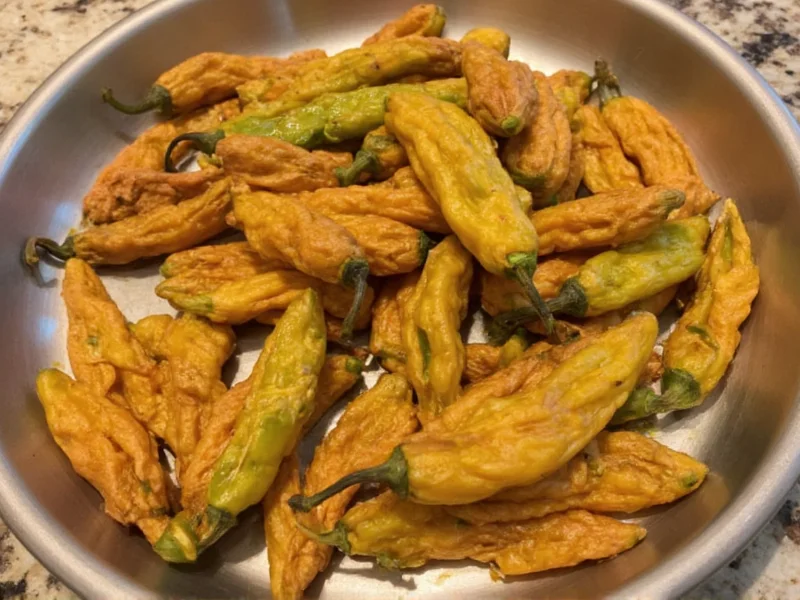Drying jalapeno peppers transforms fresh chilies into versatile pantry staples with intensified heat and smoky flavor. This preservation technique has been used for centuries across Mexican and Southwestern cuisines, allowing cooks to enjoy jalapenos year-round. Whether you've harvested more peppers than you can use fresh or want to create your own homemade chili powder, drying is an excellent solution that requires minimal equipment.
Why Dry Jalapeno Peppers?
Drying concentrates the natural capsaicin and flavors in jalapenos while removing moisture that causes spoilage. The process creates several advantages over fresh peppers:
- Extends shelf life from weeks to potentially years
- Reduces storage space requirements significantly
- Creates versatile ingredients for powders, flakes, and seasonings
- Develops complex, smoky flavor notes not present in fresh peppers
- Preserves nutritional value including vitamin C and antioxidants
Preparing Jalapenos for Drying
Start with firm, blemish-free jalapenos at peak ripeness. Fully mature red jalapenos contain more capsaicin and develop richer flavor when dried compared to green varieties, though both work well. Follow these preparation steps:
- Wash peppers thoroughly under cool running water
- Wear gloves to prevent capsaicin burns on sensitive skin
- Pat completely dry with clean towels
- Remove stems and seeds (optional but recommended for most applications)
- Slice uniformly into 1/4-inch rings for even drying
Drying Methods Compared
| Method | Temperature | Time Required | Best For |
|---|---|---|---|
| Food Dehydrator | 125°F (52°C) | 6-10 hours | Most consistent results, hands-off process |
| Oven Drying | 135°F (57°C) | 8-12 hours | When dehydrator unavailable, moderate attention needed |
| Air Drying | Ambient | 2-3 weeks | Traditional method, requires dry climate |
Step-by-Step Drying Instructions
Using a Food Dehydrator (Recommended Method)
Arrange jalapeno slices in a single layer on dehydrator trays without overlapping. Set temperature to 125°F (52°C) and dry for 6-10 hours. Check periodically after 6 hours by bending a piece—fully dried jalapenos should snap crisply. Rotate trays occasionally for even drying, especially with non-rotating dehydrators.
Oven Drying Technique
Preheat your oven to its lowest setting, ideally 135°F (57°C). Place jalapeno slices on wire racks over baking sheets to allow air circulation. Prop the oven door open 2-3 inches using a wooden spoon to maintain proper airflow and prevent steaming. Check every 2 hours after the 6-hour mark. Total drying time typically ranges from 8-12 hours depending on pepper thickness and oven accuracy.
Traditional Air Drying Method
Thread jalapenos onto unflavored dental floss or thin string through the stem end, leaving space between peppers. Hang in a warm, dry, well-ventilated area away from direct sunlight. Ideal conditions include temperatures above 80°F (27°C) with low humidity. Complete drying typically takes 2-3 weeks. This method works best in arid climates but may develop mold in humid environments.
Testing for Complete Dryness
Properly dried jalapenos should exhibit these characteristics:
- Brittle texture that snaps when bent
- No visible moisture or soft spots
- Leathery appearance with significant shrinkage
- Darkened color (deep red or dark green depending on original)
If any flexibility remains or moisture appears when squeezed, continue drying. Incomplete drying leads to mold during storage.
Proper Storage of Dried Jalapenos
Store completely cooled dried jalapenos in airtight containers away from light and heat. Glass jars with tight-sealing lids or vacuum-sealed bags work best. Include a food-safe desiccant packet to absorb any residual moisture. For longest shelf life, store in the refrigerator or freezer. Properly stored dried jalapenos maintain quality for 6-12 months.
Culinary Uses for Dried Jalapenos
Dried jalapenos offer versatile applications in cooking:
- Rehydrate in hot water for 20 minutes to use in sauces and stews
- Grind into powder for homemade chili seasoning
- Add whole dried peppers to soups and braises for subtle heat
- Create infused oils by steeping in warm oil
- Make traditional Mexican dishes like rajas con crema
When substituting dried for fresh jalapenos, use a 3:1 ratio (3 parts fresh to 1 part dried) as the flavor concentrates significantly during drying.
Troubleshooting Common Drying Issues
Mold development: Caused by insufficient air circulation or high humidity. Prevent by ensuring proper spacing between peppers and using desiccants in humid environments.
Inconsistent drying: Results from uneven slicing. Always cut peppers to uniform thickness for consistent results.
Burning or darkening: Indicates temperature too high. Reduce heat and increase drying time for better results.
Loss of flavor: Occurs when peppers dry too quickly. Lower temperatures preserve more volatile flavor compounds.











 浙公网安备
33010002000092号
浙公网安备
33010002000092号 浙B2-20120091-4
浙B2-20120091-4